If you’ve ever been to Thailand you will notice all kinds of little sauces and sprinkles that often come with our food. One of those sauces is and absolutely essential condiment of Thai cuisine, especially for our noodle dishes: chili vinegar or prik nam som พริกน้ำส้ม.
It adds an acidic zing with a little bit of heat, and when used in the right places, it takes a dish to the next level. And for some dishes, like pad see ew and boat noodles, a dash of prik nam som is absolutely necessary!
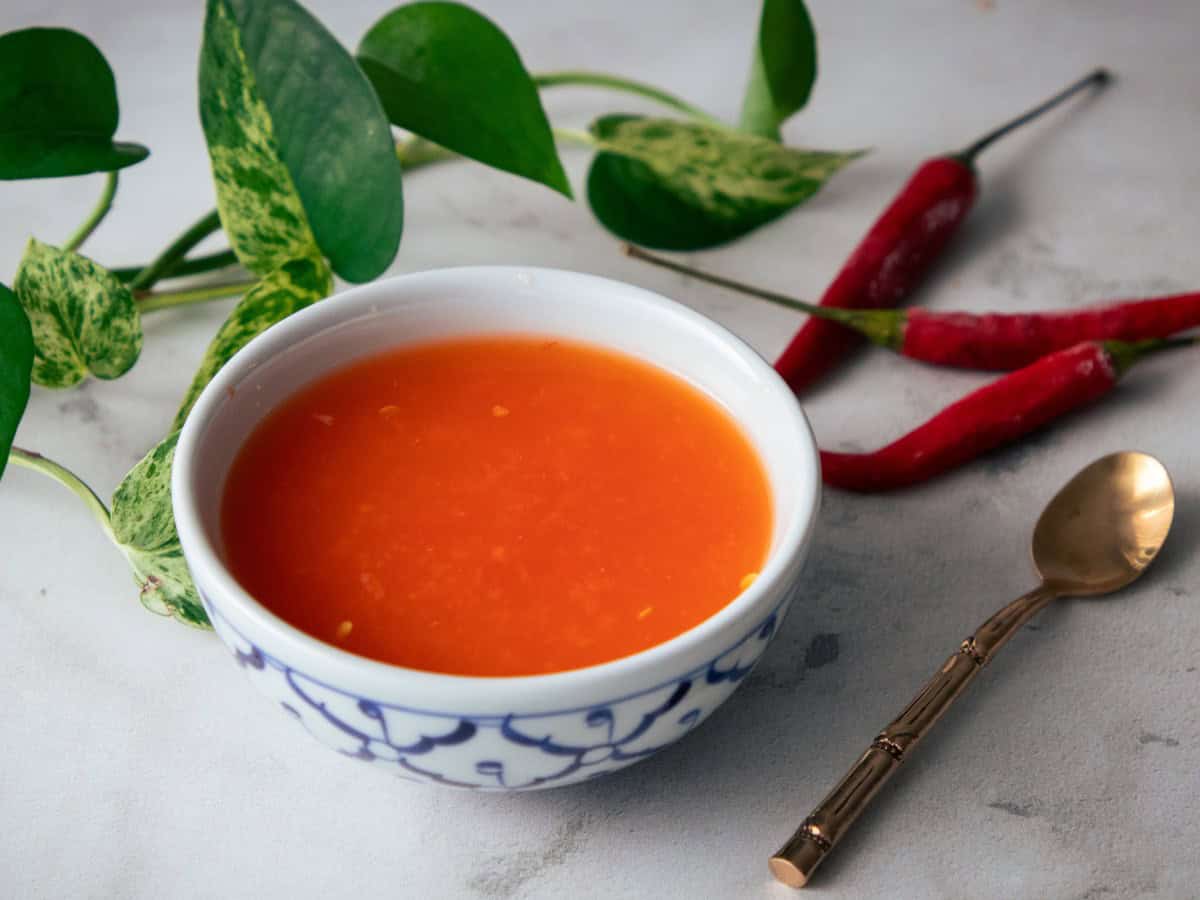
Want to save this recipe?
What is prik nam som?
Prik means chlies and nam som means vinegar, and in its simplest form, that’s all there is: chilies mixed with plain old white vinegar, though you can get a little fancy, and I’ll show you how to do that too.
It’s a spicy, vinegary sauce that we use on any dish that’s heavy or oily, with a flavour profile that's salty and/or sweet because the acid and heat helps cut the grease and balance the sweet and saltiness.
We use it on dishes like pad see ew, pork leg stew with rice (kao ka moo), rad na noodles with gravy and boat noodles. In fact you can use it on any kind of noodle soups, and you can use it wherever you’d want to add a vinegary hot sauce, even if it’s not Thai food!
In Thailand, if you order any of the dishes I mentioned above, there will automatically be prik nam som served with it, if it's not already sitting on the table. In Thai restaurants overseas, however, you will probably have to ask for it, but they may not have it available. Many Thai restaurants omit these condiments to simplify things.
Ingredients and Notes
Here are a few important notes on the ingredients. For amounts, see the full recipe card below.
- Thai Chilies. I use Thai chilies but any kind of spicy fresh chilies will also work. You can use either red or green, but I personally prefer the flavour of red chilies as they are fruitier.
If you want a milder chili vinegar, you can remove the seeds and pith from the chilies, or use milder chilies (e.g Fresno) to start with. - White vinegar. We only use white vinegar for prik nam som because the idea is to add neutral acidity, not to introduce new flavours. While milder vinegars such as Filipino cane vinegar or rice vinegar will be fine, don't use apple cider vinegar or anything else that has a distinct flavour. NO balsamic!
- Garlic. This is totally optional, only if you want to make it a little more complex! Most of the time I just stick with chilies and vinegar.
How to Make Chili Vinegar - 4 Ways
There are several variations of prik nam som in Thailand, and here are the 4 most common ones. I'm showing you how to make them in a mortar and pestle, but for large amounts, you can put everything into a blender.
1. Basic Prik Nam Som
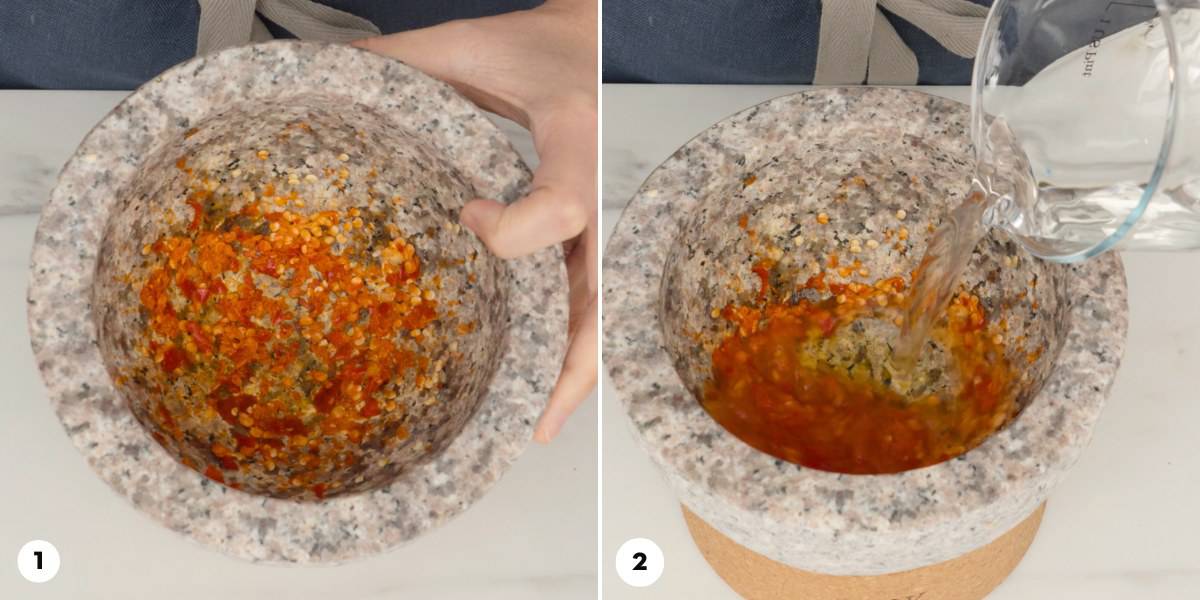
- Pound chilies in a mortar and pestle until mostly fine.
- Add the vinegar and swirl the pestle to mix.
2. Charred Prik Nam Som
This version uses charred chilies which not only adds smokiness but also make it a bit sweeter as the chilies will be cooked. You can char the chilies more than what's shown in the image for extra smokiness.
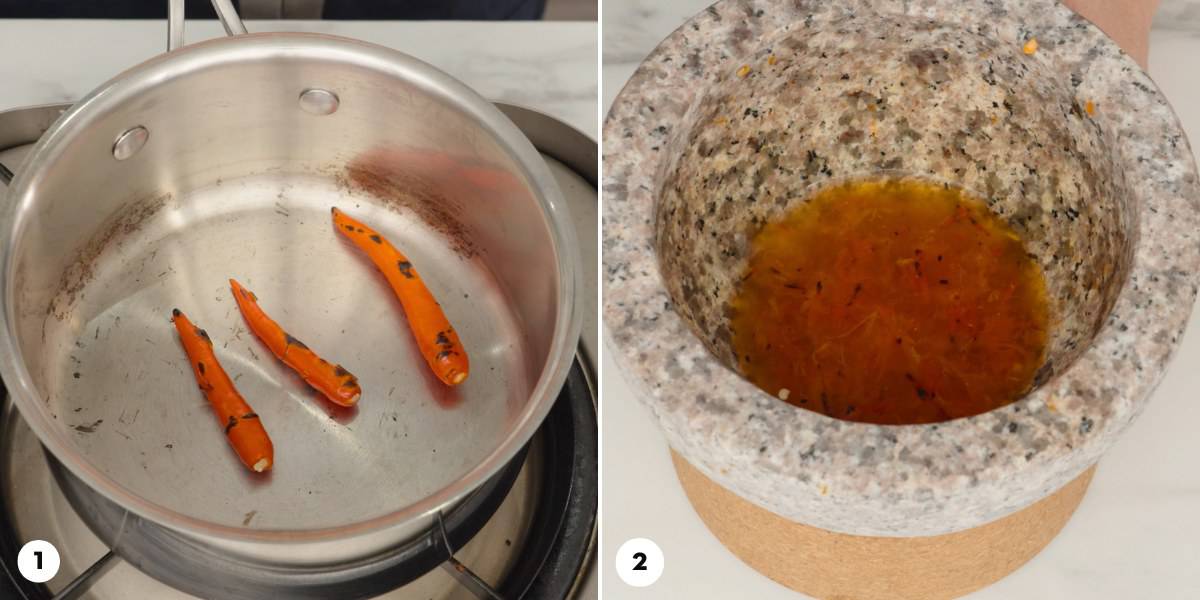
- Char the chilies on a dry hot pan until they develop charred spots all around.
- Pound until fine in a mortar and pestle then add vinegar and mix.
3. Garlic Prik Nam Som
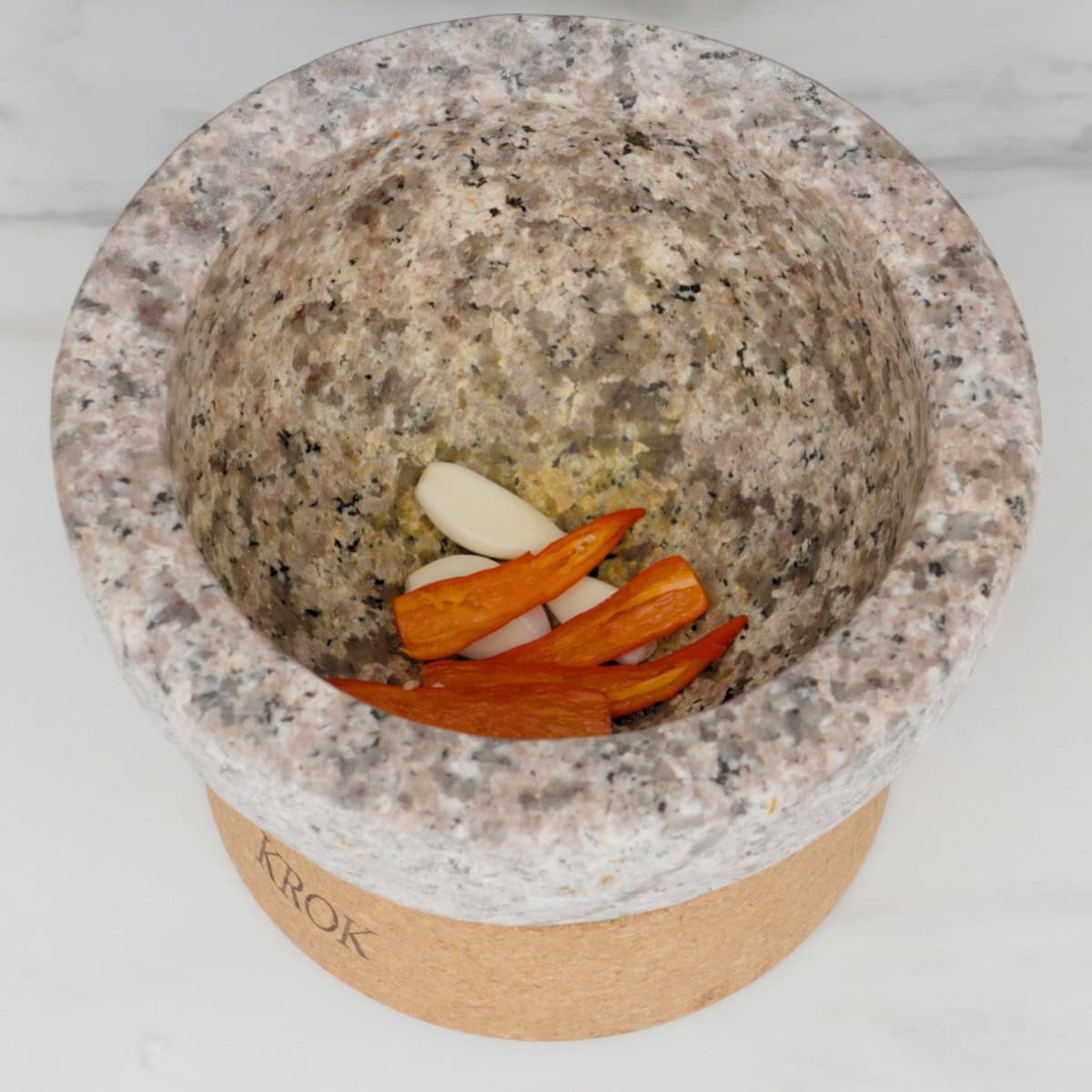
Whether you decide to do the basic or the charred prik nam som, you can also add garlic for a more complex flavour. You can even char the garlic along with the chilies if you're going that route. Notice in the photo above I used seeded chilies, which you can do if you want to tone down the heat.
4. Sliced Prik Nam Som
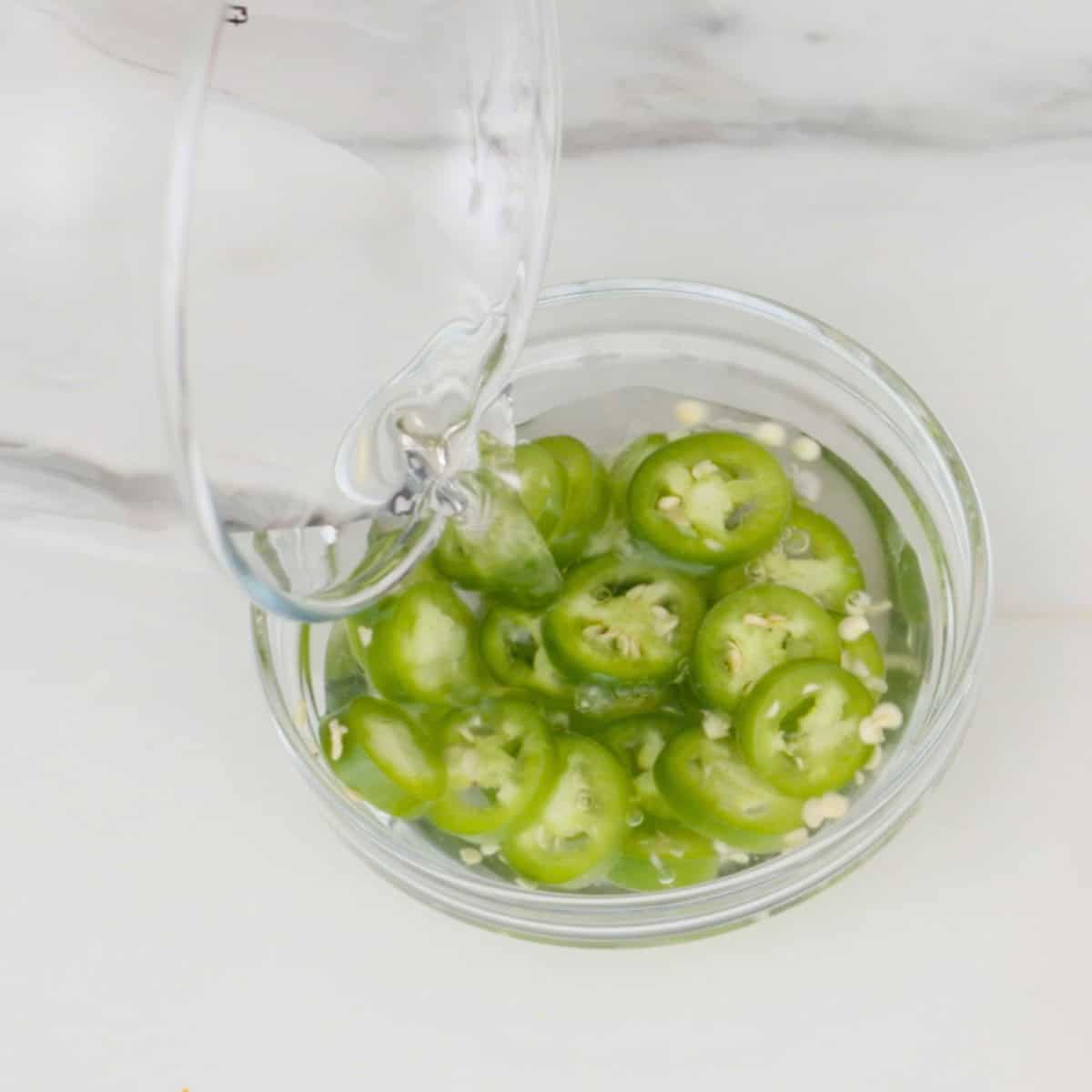
In Thailand you may have seen slices of chilies in clear liquid on the table, that's also a kind of prik nam som. Instead of blending the chilies, they are sliced, resulting in a quick chili pickle. Typically milder chilies are used, such as spur chilies, but you can use any kind of chilies. Pictured are serrano chilies.
Simply let sliced chilies sit in the vinegar for at least 15 minutes before using. You can eat the pieces of chilies if they are mild enough, or drizzle just the chili-infused vinegar onto your food.
FAQ: Adjusting Spice Level
Making prik nam som with Thai chilies will yield a pretty spicy hot sauce, so if your heat tolerance isn't high, there are a couple of things to do:
- Remove the seeds and pith from the chilies. This would be my go-to method as it preserves the amount of chili flavour.
- Use another type of chilies that is milder, if they are available toy ou. In Thailand this would be spur chilies or prik chee fa. Fresno chilies would also work well.
- Increase the ratio of vinegar, though this would result in the least flavourful sauce as there would be less chili flavour.
Storage
Prik nam som can be stored in the fridge in a sealed container indefinitely. It can also be frozen. I would stick with glass containers as over time the chilies can stain plastic. Also, stay away from lids that are made with reactive metal, such as aluminum mason jar lids, as the acid can corrode it.
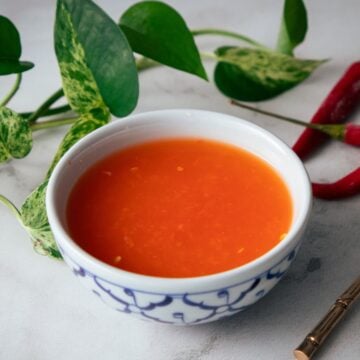
Thai Chili Vinegar (Prik Nam Som)
Ingredients
- 2-3 Thai chilies, see note
- 1 clove garlic, optional
- ¼ cup white vinegar
Want to save this recipe?
Notes
FULL VIDEO TUTORIAL
All my recipes come with step-by-step video tutorials with extra tips not mentioned in the blog post, so make sure you watch the video to ensure success. If you enjoy them, consider subscribing to the YouTube Channel to not miss an episode. Thank you!
Subscribe to my YouTube ChannelInstructions
- Optional step: char the chilies and garlic (if using) by placing them on a dry skillet over high heat until charred spots are formed on one side. Roll/flip them over and char the other side.2-3 Thai chilies, 1 clove garlic
- Pound the chilies and garlic in a mortar and pestle into a paste, then add the vinegar and stir to mix. If making a large batch, blend all ingredients in a blender.¼ cup white vinegar
- Store in the fridge in a sealed container and it should last indefinitely.

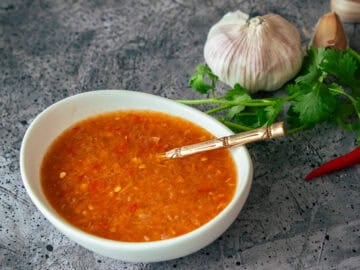
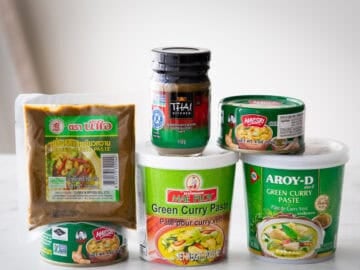

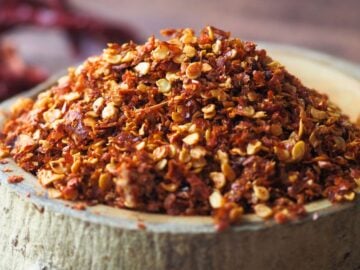
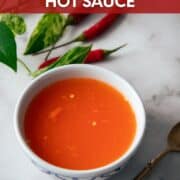
Brad Rogers says
So good. Addicted to it now.
Mikey says
Out of curiosity, is there a difference between US/CA and TH vinegar? I don't think I've ever seen a Thai brand vinegar in my local Asian markets. If it's worth bringing home some TH bottles, I'd make the extra effort! If vinegar is vinegar is vinegar, then I'd just as rather not mule back more glass bottles.
George says
Chile vinegar is so easy to make, and it improves almost any dish!
Russ says
This is a must for me when making pad see ew or rad na. So easy and becomes an integral part of the dish!
Marion says
Can’t wait to have this with my noodles!
Pai’s recipes are the BEST
Jo says
Love this and so simple!